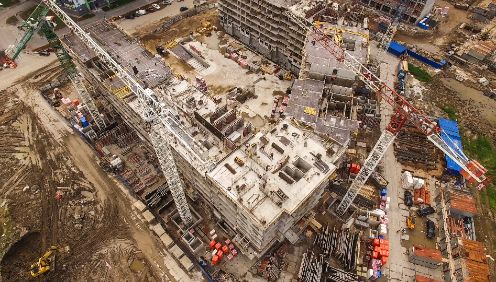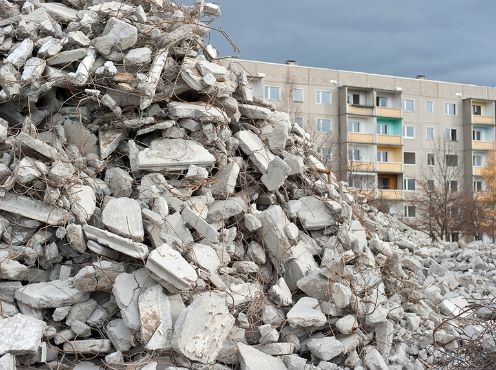
OUR REGENERATIVE MISSION.
There is an urgent need to develop the built environment at scale while we address the climate emergency and the effects of construction on our planet.
Our mission at B-ton has been to decarbonise and regenerate the construction industry by developing proprietary technologies and processes which remove CO2 emissions, allow the use of local and previously unusable aggregates, reduce water consumption and remove the reliance on steel.
The construction industry is
Polluting, Wasteful, Slow.
The construction industry contributes 40% of all CO2 emissions, a third of all waste, and is a key contributor to global warming.
The construction industry has recognised its responsibility to the planet and has implemented measures to reduce global emissions and its negative impact on the planet. Over the last 30 years, CO2 emissions have been reduced by 19% per tonne of cementitious material, energy efficiency has improved by 18%, and the amount of alternative fuels used has increased 9 times since 1990.
The construction industry has set a target of achieving net-zero emissions by 2050. The target of net-zero emissions is a good start, but it is not enough and 2050 is too slow.


3rd of waste

Net-Zero 2050

2.9°C by 2100
The impact of
Population, Concrete, Cement.
The United Nations Population Division projects that the world will reach 9 billion people in 2037 and 10 billion people in 2060. To accommodate this rise in population, the global building stock is expected to double, reaching 460 billion m2 GFA by 2060.
Concrete is not just the world's most used construction material.It is also the world's 2nd most used material, right behind water. Concrete is used in such large amounts because it is an excellent building material to build at scale and is the only existing material that can accommodate the impending rising population.
Cement is the key ingredient that makes concrete special. Ordinary Portland Cement (OPC), containing 95-100% ‘clinker’, is the most common form. Cement contributes 8% of global emissions and is also the main contributor to CO2 emissions from concrete production, accounting for 88%.
However, the environmental impact of concrete goes further than the CO2 released into the atmosphere through cement production. Such widespread use of concrete is also exhausting supplies of useable sands and aggregates. Moreover, concrete consumes almost 10% of the world’s industrial water supplies.
Suppose we add the amount of steel used within reinforced concrete structures, and the miles travelled transporting raw materials from the quarry to the cement mixer is also an issue. In that case, the vast impact of concrete use on our planet is easier to understand. We cannot continue in this way.

10 Billion by 2060

Building stock must 2X

2nd most used material
